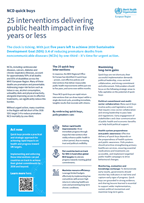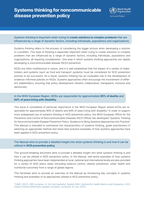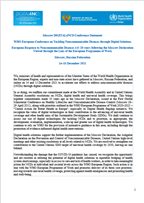
Cardiovascular diseases EURO
Cardiovascular diseases (CVDs) are the leading cause of death globally, taking an estimated 19.8 million lives each year. CVDs are a group of disorders of the heart and blood vessels and include coronary heart disease, cerebrovascular disease, rheumatic heart disease and other conditions. More than four out of five CVD deaths are due to heart attacks and strokes, and one third of these deaths occur prematurely in people under 70 years of age.
The most important behavioural risk factors of heart disease and stroke are unhealthy diet, physical inactivity, tobacco use and harmful use of alcohol. The effects of behavioural risk factors may show up in individuals as raised blood pressure, raised blood glucose, raised blood lipids, and overweight and obesity. These “intermediate risks factors” can be measured in primary care facilities and indicate an increased risk of heart attack, stroke, heart failure and other complications.
Cessation of tobacco use, reduction of salt in the diet, eating more fruit and vegetables, regular physical activity and avoiding harmful use of alcohol have been shown to reduce the risk of cardiovascular disease. Health policies that create conducive environments for making healthy choices affordable and available are essential for motivating people to adopt and sustain healthy behaviours.
Identifying those at highest risk of CVDs and ensuring they receive appropriate treatment can prevent premature deaths. Access to noncommunicable disease medicines and basic health technologies in all primary health care facilities is essential to ensure that those in need receive treatment and counselling.
Technical links













.tmb-144v.png?sfvrsn=c2a4b89b_5)

